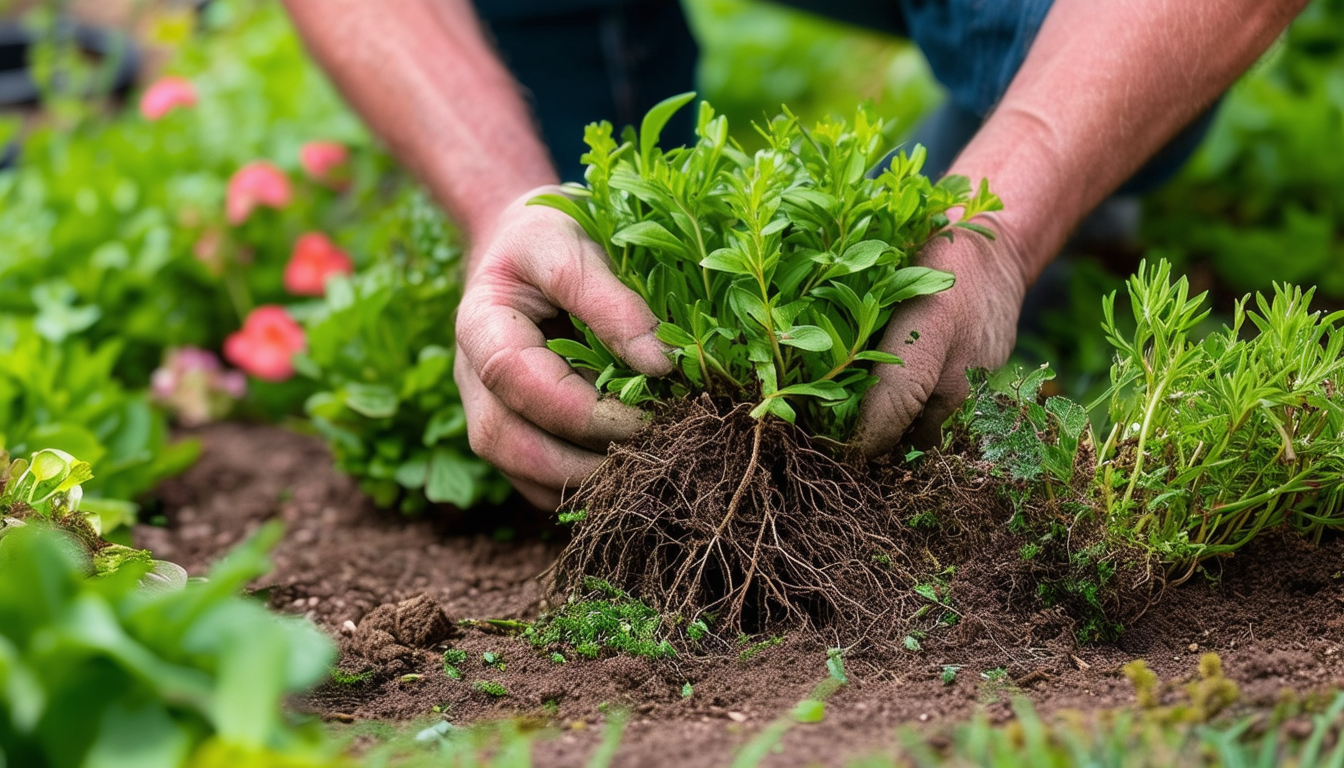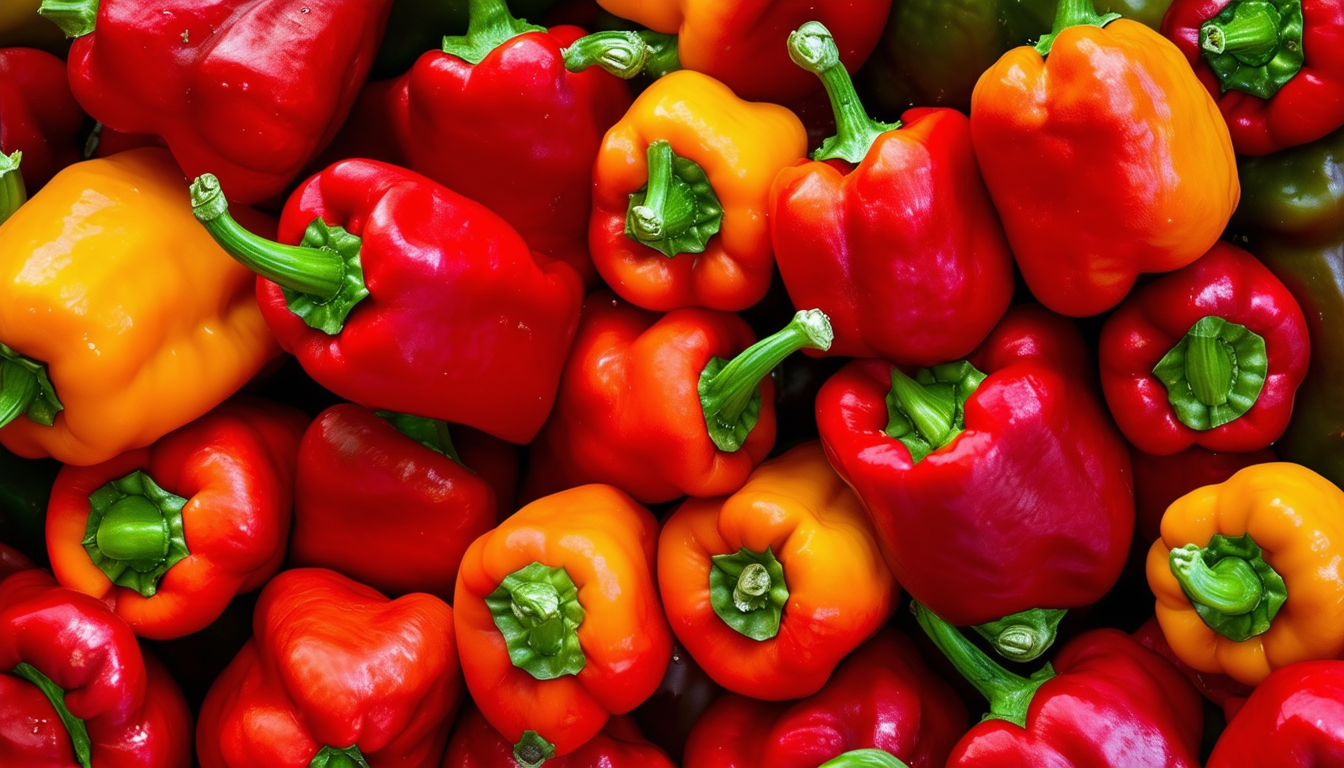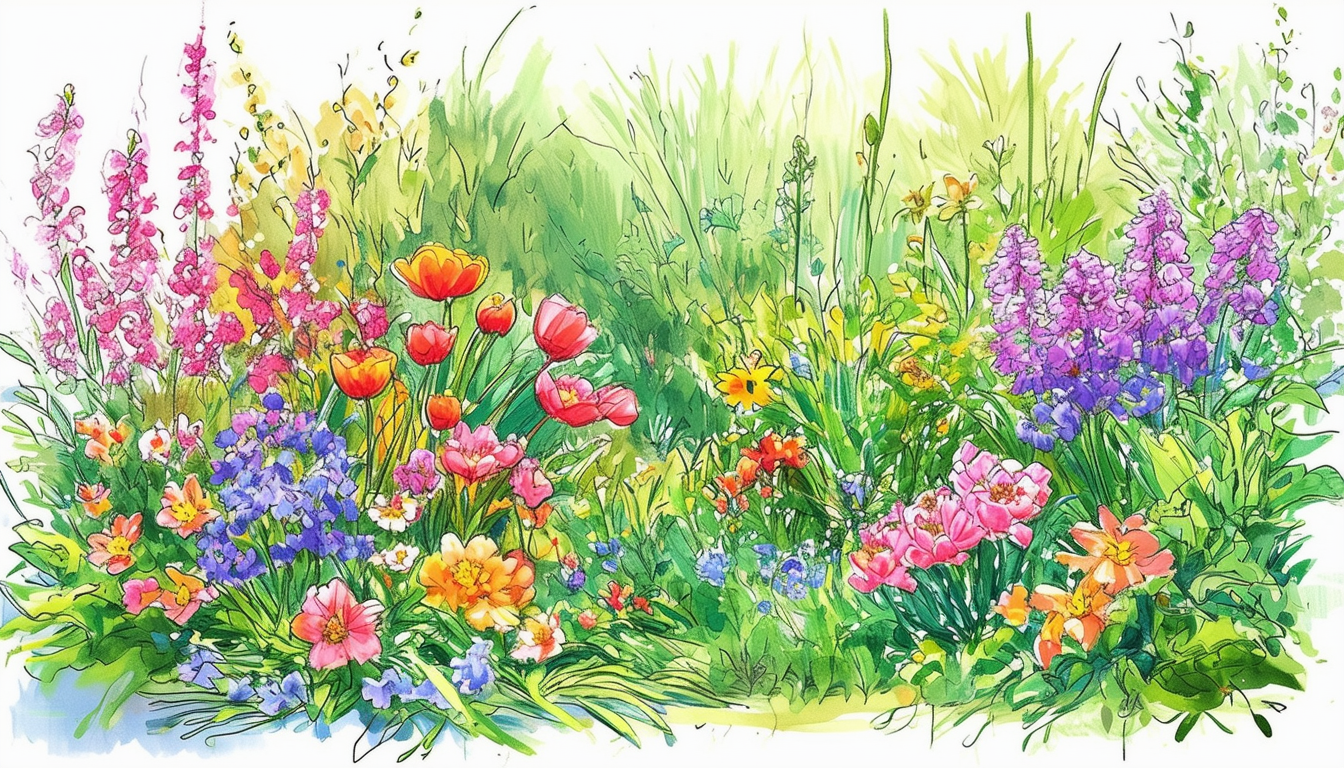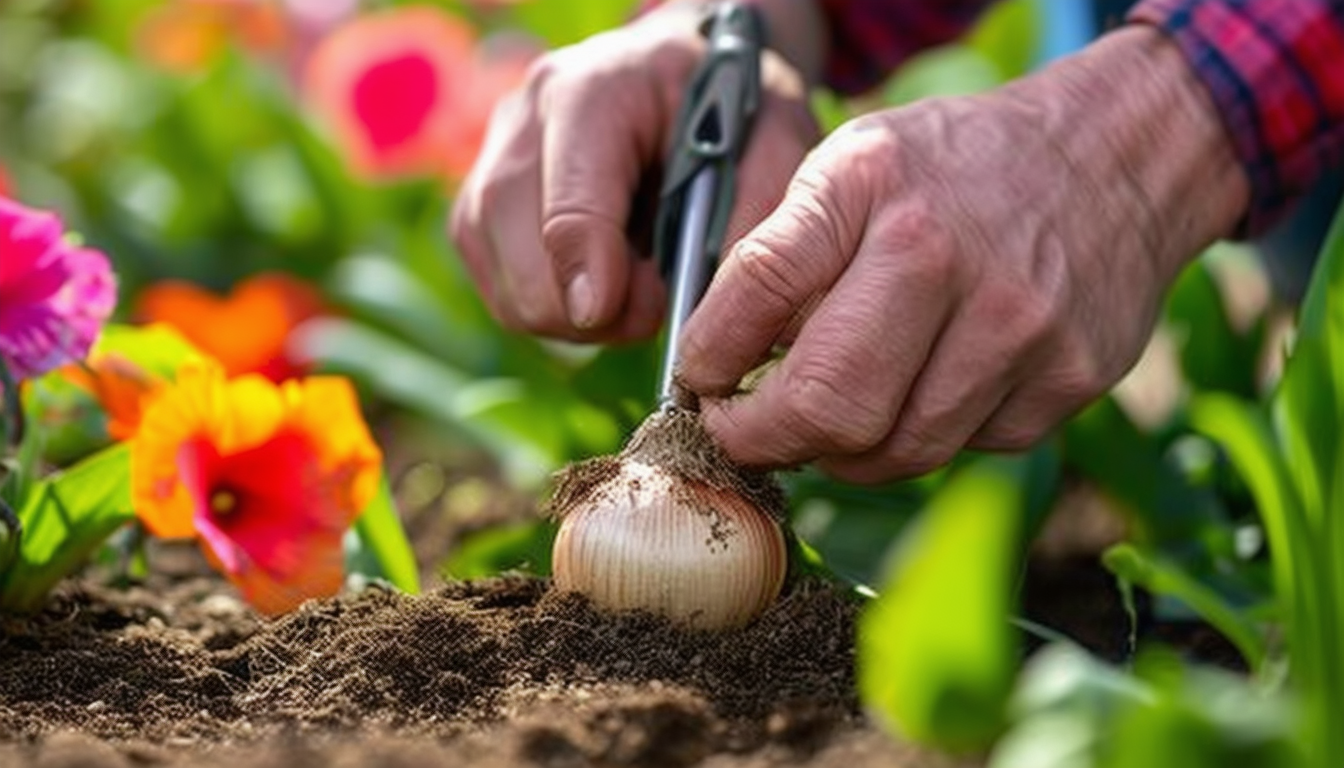
Unlock the secret to a thriving garden by mastering the art of dividing perennials, a crucial technique for ensuring robust plant health and vibrant blooms year after year.
Intro - Why Divide Perennials: The Benefits for Your Garden
Dividing perennials is a time-honored gardening practice that offers numerous benefits for your garden. By splitting mature plants, you not only give them a new lease on life but also encourage more vigorous growth and abundant blooms. This process helps prevent overcrowding, ensures better air circulation, and improves the overall health of your plants. Moreover, dividing perennials allows you to propagate your favorite plants, giving you more of what you love without spending extra money.
The Best Time to Divide Your Perennials
Knowing when to divide your perennials is crucial for their successful propagation. The best time to divide most perennials is either in early spring before new growth starts or in early fall when the plants are winding down for the season. Spring divisions allow the plants to establish themselves before the heat of summer, while fall divisions take advantage of cooler temperatures and autumn rains to settle in. However, some perennials have specific timing needs, so it's always a good idea to research your particular plant species.
Tools and Preparation: What You'll Need
Preparing the right tools and materials is essential for the smooth division of your perennials. You'll need a sharp spade or garden fork, a clean knife or pruning shears, and a pair of gloves to protect your hands. Additionally, having a bucket of water nearby can help keep the roots moist during the process. Before you start, ensure your tools are clean and disinfected to prevent the spread of diseases. Also, prepare the new planting sites or pots where the divided plants will be relocated.
5 Step Guide to Dividing Perennials
1. Water the Plants: Water the perennials thoroughly a day before you plan to divide them. This makes the soil easier to work with and reduces stress on the plants.
2. Dig Up the Clump: Using a spade or garden fork, carefully dig around the perimeter of the plant clump. Lift the clump out of the ground, taking care to keep as much root mass intact as possible.
3. Separate the Clump: Gently shake off excess soil and use your hands, a knife, or pruning shears to divide the clump into smaller sections. Each section should have a healthy amount of roots and at least one or two shoots.
4. Replant Immediately: Place the divided sections into their new locations or pots. Ensure the roots are spread out and the crown is at soil level. Fill in with soil and press down gently to eliminate air pockets.
5. Water and Mulch: Water the newly planted divisions thoroughly to help them settle in. Apply a layer of mulch around the base to retain moisture and suppress weeds.
Aftercare: Ensuring Your Divided Plants Thrive
Aftercare is critical to ensure the success of your newly divided perennials. Keep the soil consistently moist but not waterlogged, and protect the plants from extreme weather conditions. Providing a balanced fertilizer can help support growth, though it's usually best to wait a few weeks to avoid stressing the plants. Monitor for signs of stress or disease, and remove any damaged leaves or stems promptly. With proper care, your divided perennials will quickly establish themselves and reward you with beautiful blooms.
Comprehensive list of 20 perennials that can be propagated by division
1. Daylilies (Hemerocallis)
2. Hostas
3. Peonies
4. Black-eyed Susans (Rudbeckia)
5. Sedum
6. Geraniums
7. Asters
8. Bee Balm (Monarda)
9. Agapanthus
10. Campanula
11. Irises
12. Ornamental Grasses
13. Shasta Daisies
14. Yarrow (Achillea)
15. Phlox
16. Chrysanthemums
17. Coreopsis
18. Echinacea
19. Lamb's Ear (Stachys)
20. Hellebores
FAQ on Dividing Perennials
What is the best time to divide perennials? - The ideal times to divide perennials are early spring, just as new growth begins, or early fall, when the plants are preparing for dormancy. These periods allow the plants to recover and establish themselves in their new locations before facing extreme weather conditions.
Can most herbaceous perennials be propagated through division? - Yes, the majority of herbaceous perennials can be successfully propagated through division. This method is particularly effective for plants that naturally form clumps, as it allows gardeners to create new plants while rejuvenating the original.
How can you tell if a plant can be divided? - To determine if a plant is ready for division, look for a dense clump with multiple shoots emerging from the base. This indicates that the plant has grown sufficiently and can be split into smaller sections without harming its overall health.
How do you propagate herbaceous plants? - Herbaceous plants are propagated by carefully dividing the root clump into smaller sections, ensuring each section has a healthy amount of roots and shoots. This method encourages new growth and helps maintain the plant's vigor.
What are the easiest perennials to divide? - Some of the easiest perennials to divide include hostas, daylilies, and black-eyed Susans. These plants naturally form clumps and respond well to division, making them ideal choices for gardeners looking to expand their plant collection.
When to divide peonies? - Peonies should be divided in early fall, after they have finished blooming and the foliage has started to die back. This timing allows the plants to settle in before winter and ensures a strong start in the spring.
What is the best tool to divide perennials? - A sharp spade or garden fork is the best tool for dividing perennials. These tools help you dig around and lift the plant clump with minimal damage to the roots, making the division process smoother and more efficient.
When can you divide hostas? - Hostas can be divided in early spring, just as they begin to emerge from the ground, or in early fall, when the temperatures are cooler. Both times are suitable for ensuring the divisions establish well in their new locations.
When to split sedum? - Sedum is best split in early spring, as new growth begins. This timing allows the plant to recover quickly and take advantage of the growing season to establish itself.
Can you split campanula? - Yes, campanula can be split either in spring or fall. Both seasons provide favorable conditions for the plant to recover and thrive after division.
Which is a good example of an herbaceous perennial? - Daylilies are an excellent example of an herbaceous perennial. They are known for their vibrant blooms and ability to form clumps, making them ideal candidates for division.
When can you take herbaceous cuttings? - Herbaceous cuttings are best taken in late spring to early summer when the plants are actively growing. This timing ensures that the cuttings have the best chance of rooting successfully.
When to divide geraniums? - Geraniums should be divided in spring or early fall. These times allow the plants to establish themselves in their new locations before the stress of summer heat or winter cold.
Can you divide a hydrangea? - Yes, hydrangeas can be divided, but it is more challenging due to their woody stems and extensive root systems. Careful handling and timing, typically in spring or fall, are crucial for successful division.
What is the best tool for dividing hostas? - A spade or garden fork is ideal for dividing hostas. These tools help you lift the clump with minimal root damage, ensuring the divisions have the best chance of thriving.
When to divide agapanthus? - Agapanthus should be divided in early spring or after they have finished blooming. This timing allows the plants to recover and establish themselves before the next growing season.
How long does it take for a rhododendron cutting to root? - Rhododendron cuttings typically take several months to root. Patience and proper care, such as maintaining humidity and consistent moisture, are essential for successful rooting.
What is herbaceous cuttings example? - An example of herbaceous cuttings is taking cuttings from soft, non-woody plants like geraniums or coleus. These cuttings are then rooted in soil or water to produce new plants.
When to take cuttings of perennials? - The best time to take cuttings of perennials is in late spring to early summer when the plants are actively growing. This ensures the cuttings have the best chance of rooting and developing into healthy plants.
What is the best time of year to divide perennials? - The optimal times of year to divide perennials are early spring and early fall. These periods provide favorable conditions for the plants to recover and establish themselves in their new locations.
What is the fastest spreading perennial? - Yarrow is known as one of the fastest spreading perennials. Its ability to quickly establish and spread makes it a popular choice for ground cover and filling in garden spaces.
Can you split a clematis? - Yes, clematis can be split, but it is more complex due to their vining nature and delicate root systems. Careful handling and timing, typically in spring or fall, are essential for successful division.
What is the best tool for dividing perennials? - A sharp spade or garden fork is the best tool for dividing perennials. These tools help you dig around and lift the plant clump with minimal damage to the roots, making the division process smoother and more efficient.
What is the most hardy perennial? - Black-eyed Susans are considered one of the most hardy perennials. They are known for their resilience and ability to thrive in a variety of conditions, making them a reliable choice for many gardens.
Can you split lupins? - Yes, lupins can be split in early spring. This timing allows the plants to recover and establish themselves before the growing season is in full swing.
How to divide peonies? - To divide peonies, dig up the entire clump in the fall and carefully cut it into sections, ensuring each section has several healthy buds and roots. Replant the divisions promptly to allow them to settle in before winter.
When to divide hydrangeas in the UK? - In the UK, hydrangeas are best divided in spring or fall. These seasons provide the most favorable conditions for the plants to recover and establish themselves in their new locations.
How do you divide sedums? - To divide sedums, dig up the entire clump in spring and gently separate it into smaller sections. Each section should have a healthy amount of roots and shoots. Replant the divisions promptly to ensure successful establishment.
How do you take herbaceous cuttings? - To take herbaceous cuttings, select healthy stems from non-woody plants, cut them to a length of 4-6 inches, and root them in soil or water. This method allows you to propagate new plants from existing ones.
When to divide black-eyed Susans? - Black-eyed Susans should be divided in early spring or fall. These times allow the plants to establish themselves in their new locations before facing extreme weather conditions.
Is a perennial herbaceous plant in the family? - Yes, many perennials are herbaceous, meaning they have non-woody stems that die back at the end of the growing season. These plants often form clumps, making them suitable for division.
How do you divide agapanthus? - To divide agapanthus, dig up the entire clump in spring or after flowering and carefully split it into smaller sections. Each section should have a healthy amount of roots and shoots. Replant the divisions promptly to ensure successful establishment.
When to divide dianthus? - Dianthus should be divided in early spring. This timing allows the plants to recover and establish themselves before the growing season is in full swing.
How do you divide petunias? - Petunias are usually propagated by cuttings rather than division. To propagate petunias, take cuttings from healthy stems and root them in soil or water.
What time of year is best to split plants? - The best times of year to split plants are early spring and early fall. These periods provide favorable conditions for the plants to recover and establish themselves in their new locations.
What is the best tool to divide plants? - A sharp spade or garden fork is the best tool for dividing plants. These tools help you dig around and lift the plant clump with minimal damage to the roots, making the division process smoother and more efficient.
How long are herbaceous cuttings? - Herbaceous cuttings are typically 4-6 inches long. This length provides enough stem for rooting while ensuring the cutting has sufficient energy to develop into a new plant.
Can I split my plant? - Most likely, especially if it’s a perennial. Perennials often form clumps that can be divided to create new plants, rejuvenate the original, and prevent overcrowding.
How to do plant propagation? - Plant propagation can be done through division, cuttings, or seeds. Each method has its own advantages and is suitable for different types of plants, allowing gardeners to expand their collections and maintain plant health.
Can you split a hebe? - Hebes are usually propagated by cuttings rather than division. To propagate hebes, take cuttings from healthy stems and root them in soil or water.
How are the criteria for deciding divisions in plants different? - The criteria for deciding divisions in plants vary based on plant type and growth habit. Factors such as clump density, root health, and the presence of multiple shoots help determine if a plant is ready for division.
Can you split hydrangeas in summer? - It’s not recommended to split hydrangeas in summer, as the heat can stress the plants. Spring or fall is a better time for division, allowing the plants to recover and establish themselves in cooler conditions.
Can you propagate plants straight into soil? - Yes, many cuttings can be rooted directly in soil. This method provides a stable environment for root development and is often used for herbaceous and woody plants.
What is the best time to take plant cuttings? - The best time to take plant cuttings is in late spring to early summer when the plants are actively growing. This ensures the cuttings have the best chance of rooting and developing into healthy plants.



